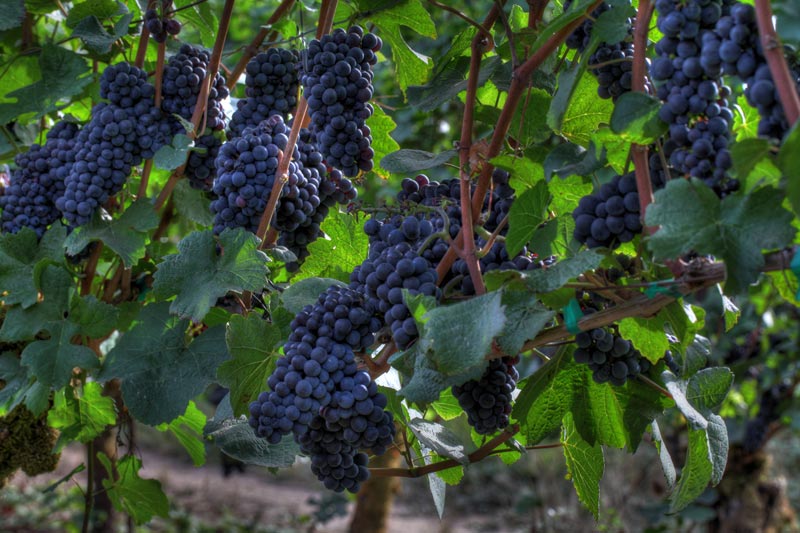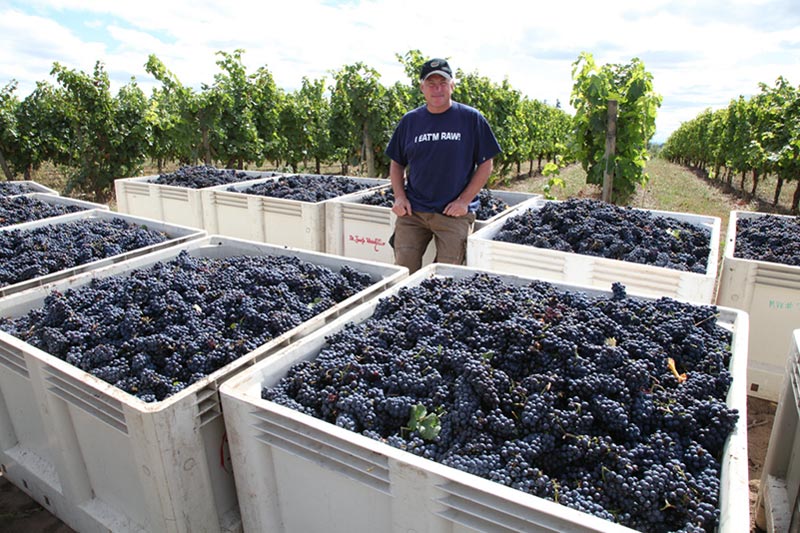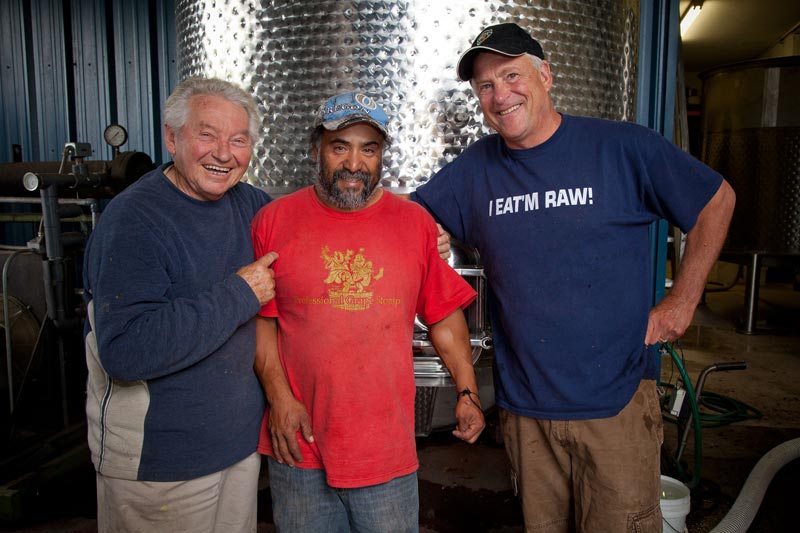
Fruit, Earth & Spice – Our Vineyards and sustainability…
Josef and Lilli set about planting vineyards in the Willamette Valley because of the great potential that they saw in the area. At that time there were less than 10 (TEN!) vineyards in all of Oregon. Over thousands of years, through wind and rain events, stones, silt and gravel have washed down to create the complex soils of St Josef’s Vineyards. The Willamette Valley floor is a former seabed that has been overlaid with nutrient-rich gravel, silt, rock and boulders brought by the formidable Missoula Floods from Montana during the Ice Age 15,000 years ago. The soils of the flood created the growing areas of the Willamette Valley, but also the Columbia Valley and Walla Walla AVAs.
The Willamette Valley is the coolest winegrowing regions in North America, featuring relatively mild wet winters and warm, dry summers. While relatively cool in the summer it enjoys extended daylight hours during the growing season. During this longer growing season, the Willamette Valley has warm days and cool nights, a diurnal temperature swing that allows the wine grapes to develop flavor and complexity while retaining their natural acidity. It is this bracing acidity that has made Willamette Valley wines sought after and famous around the world.
Josef & Lilli picked this piece of land because of its diversity; the 60+ acre property has multiple soil types – from our bench land vineyards of marine sediment and our hillside vineyards with sandy loam & Jory soils. This section of the upper Willamette Valley valley also benefits from more moderate temperatures, a combination of warm days and cool nights, without the foggy mornings found in the lower valley or the extreme heat of Southern Oregon or Columbia Valley areas. Our vineyards enjoy the warm days and cool nights producing wines with bright acidity that are nimble with food. Foodies everywhere are searching for these fresh vibrant wines and Josef and family emulated the Alsace by hand planting each vine. A rare combination of old and new vines, complex soils and hands-on farming, provides low yields and rich, flavorful grapes. Our wines are a synergy of Fruit, Earth and Spice.
Starling Hill
Since we have several soil types, slopes and exposures on the site we have a complex palate of flavors to work with. One of our favorite vineyard blocks is in our Starling Hill vineyard; located on a steep, west facing hillside overlooking a picturesque pond. Featuring 3 different soil types and great exposure it produces a small amount of concentrated fruit that everyone loves. We know its special; it’s called Starling Hill because it is the vineyard that the birds eat first and some years we are lucky to have a good harvest. We produce a special wine every year from this vineyard.
About our sustainability

When we first planted the vineyards in 1978 there was no word ‘sustainability’, we called it “doing the right thing”. This was 1978 – when ‘You light up my life’ was the #1 song; and years before the world had heard of Starbucks & Micro-brews. Our vineyards, planted by the family by hand, contain some of the oldest vines in the area – to this day they look like sturdy soldiers spreading up from the soils. The old vines add character and verve to the wines.
Vineyards and farms need to be tended with care and long term guidance. Since our inception we have used time-honored techniques to keep it as natural as possible. Our vineyards are maintained without the use of irrigation, harsh chemicals or fertilizers. We utilize winter cover crops instead of commercial fertilizers to prevent erosion and keep the soil healthy. We have special grass developed by Oregon State University between the rows to help stress the vines and keep weeds at bay. It also helps regenerate the soils in spring time. We take the grape skins & lees from the harvest crush- and add them back into the soils for fertilizer. Our landscaping crew of 7 goats and 2 llamas (picture link) are in place to keep the spread of noxious weeds and non-native plants to a minimum. Owl boxes and hawk stands are used in the vineyards as natural pest controls. In 2016 we released, with the help of the National Wildlife Center, a rehabilitated screech owl. We’re happy “Vinnie the Vineyard Owl” has found a home on the property (though maybe not so happy at 3am when he likes to say hello outside our bedroom window).
For our stewardship of the land we have received Salmon Safe certification and LIVE sustainability awards; and are proud to be a part of the 1% of NW vineyards that have achieved this level of sustainability. For our efforts in sustainability we are recognized as ‘LIVE’ certified (Low Input Viticulture & Enology). St Josef’s is also ‘Salmon Safe’ certified another level of sustainability for taking proper care of our stream, pond and natural areas. St Josef’s has been named a by-way for many migrating species and is a viewing site on the Willamette Valley birding trail.
Enjoy the wines, wildlife and hospitality of St Josef’s


